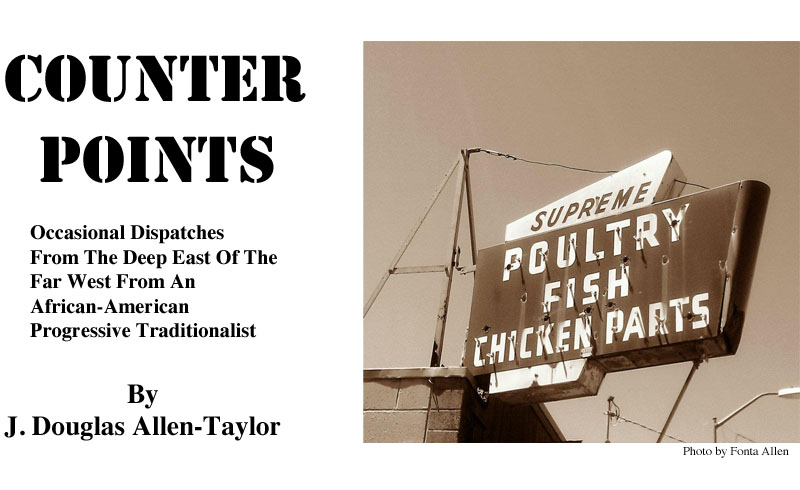|
|
IN OAKLAND'S GRAFFITI ABATEMENT, AN ECHO OF THE (FAILED) SIDESHOW STRATEGY
The recent incident on Highway 880 shows—once again—the failure of Oakland’s decades-long fight against the sideshows, but the problem is—once again—we’ll probably draw the wrong lesson from it. In case you missed it, a group of young drivers took over a small section of the Nimitz Freeway near the Coliseum sometime last week, holding up traffic while they did donuts in the middle of the road. Phone videos of the activity immediately showed up first on YouTube, then on the evening news, and finally in the offices of the California Highway Patrol, who are working now to identify cars, drivers, and license plates in order to track the perpetrators down. (“Oakland Sideshows 2013 on highway 880” YouTube January 28, 2013). Despite a decade of cracking down by Oakland police, illegal street sideshows persist in the city and, in fact, appear to be on the rise again, after tailing off for a few years. And this time, Oakland does not have the personnel to flood the streets with police in order to try and stop it, as the city did back ten years ago. Ironically, city officials passed up the chance in the early 2000’s for a deal that might have done away with street sideshows as a major problem. The sideshows actually started as distinctly non-violent events in East Oakland parking lots, not in the streets, where the organizers themselves maintained order. After the Oakland police chased the events out of the sideshows—then-Oakland Police Chief Richard Word later lamented that as a “mistake”—many of the original organizers approached city officials to try to set up legal, safe, and city-sanctioned events. Oakland police officials even identified a legitimate national autocross racing promoter who wanted to take out the necessary insurance and set up a legal sideshow venue in the city. But the proposed deal was opposed by City Hall hardliners—then-Mayor Jerry Brown, then-City Attorney John Russo, and then-Council Public Safety Committee Chair Larry Reid—and never got off the ground. The promoters went elsewhere, setting up legal sideshows around the country that have made them—and the cities that allow them—a nice profit. Meanwhile, the illegal sideshows in Oakland multiplied, and remain to this day. (See the webpage “Sideshows In Oakland” or “Showing Their Side” East Bay Express March 12, 2003 for a comprehensive look at Oakland’s sideshows at their height.) This story is relevant today not just because the illegal sideshows are returning to Oakland. City officials may be making a similar mistake when it comes to the recent epidemic of tagging and graffiti in the city. Late last year, at the instigation of City Attorney Barbara Parker and then-Councilmember Nancy Nadel, the Oakland City Council passed an ordinance they hoped would slow down the explosion of graffiti on Oakland walls and other property. The new law sets up harsher penalties for people caught tagging. It allows fines for property owners who do not remove graffiti from their buildings on a timely basis after served with notification. It sets up an alternate form of punishment—called restorative justice—which allows property owners and taggers to work out a deal that restores the property but keeps the taggers from doing jail time. Want to take a guess at what’s missing from the new graffiti ordinance? Any analysis of who is doing the tagging in Oakland, and why. Ten years ago, Oakland missed a chance to solve the sideshow problem because we assumed that everyone involved in the sideshows were irresponsible and destructive. When approached with a deal for a legal sideshow by the sideshow organizers, most city officials did not recognize and could not imagine that the organizers themselves had a greater interest in safety and responsibility at their events. Oakland’s current graffiti problems are admittedly far more complicated than the sideshows were a decade ago, because there are no overall graffiti organizers and, therefore, no-one to deal with in positions of responsibility or authority. Taggers work either alone or in segregated social circles that range from people creating urban art to folks passing along political or social slogans to gang-bangers marking territory or passing along messages to shout-out youngsters simply interested in having their names written on as many visible places as possible. That’s why I believe that while wall murals form an important part of the solution to Oakland’s graffiti problem, they cannot be the only solution, or even the main solution. While I think it could use some tweaking, Oakland’s Parker-Nadel anti-graffiti ordinance already provides the foundation for punishment for the perpetrators. There’s no need for any new laws in that direction. The next step is for Oakland city officials—in partnership with property owners, residents, law enforcement representatives, artists, and the taggers themselves—to work together to understand why Oakland is being tagged, and to discover which portion of that activity can be turned to ends that all of us can appreciate and benefit from.
|
